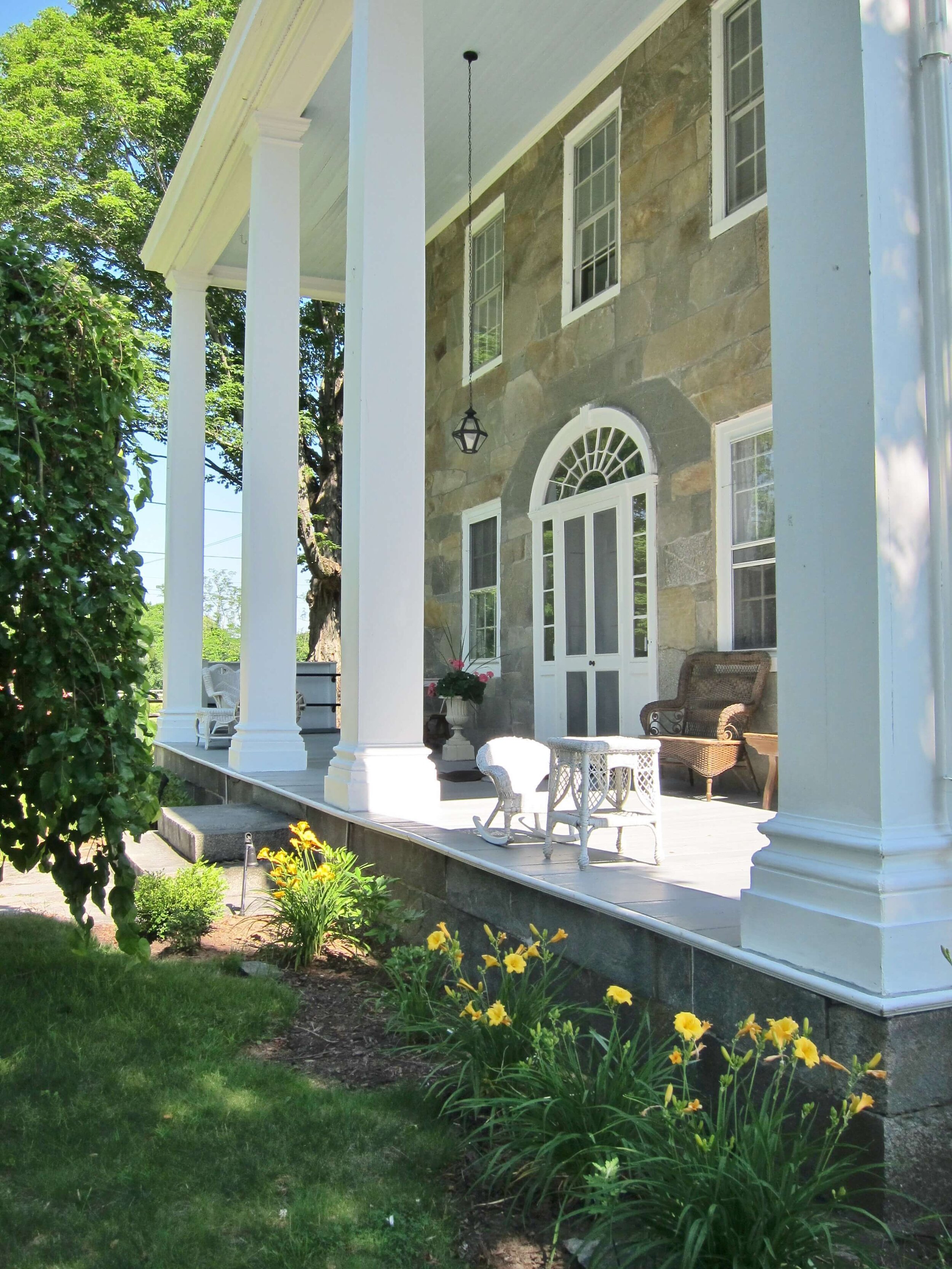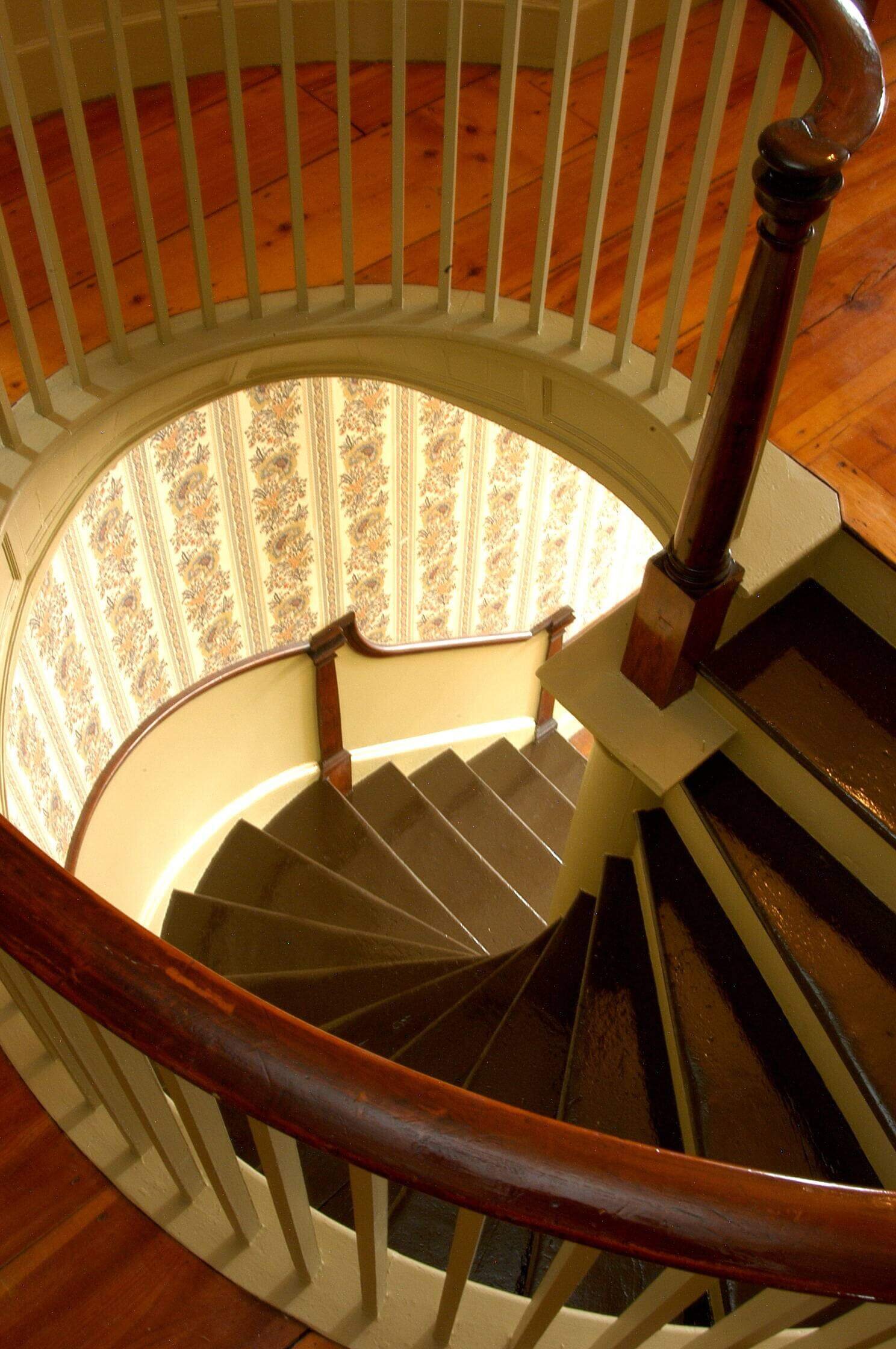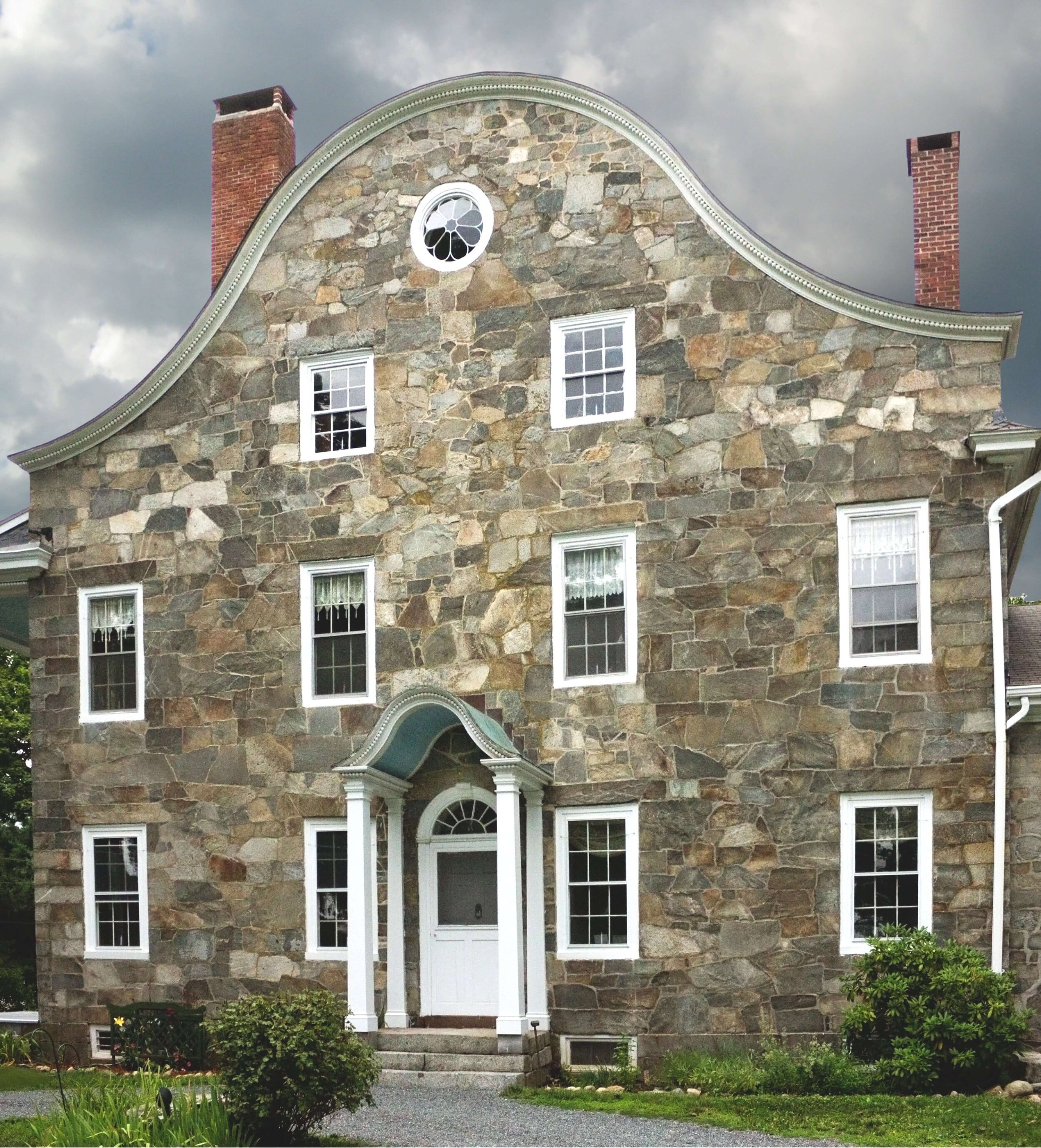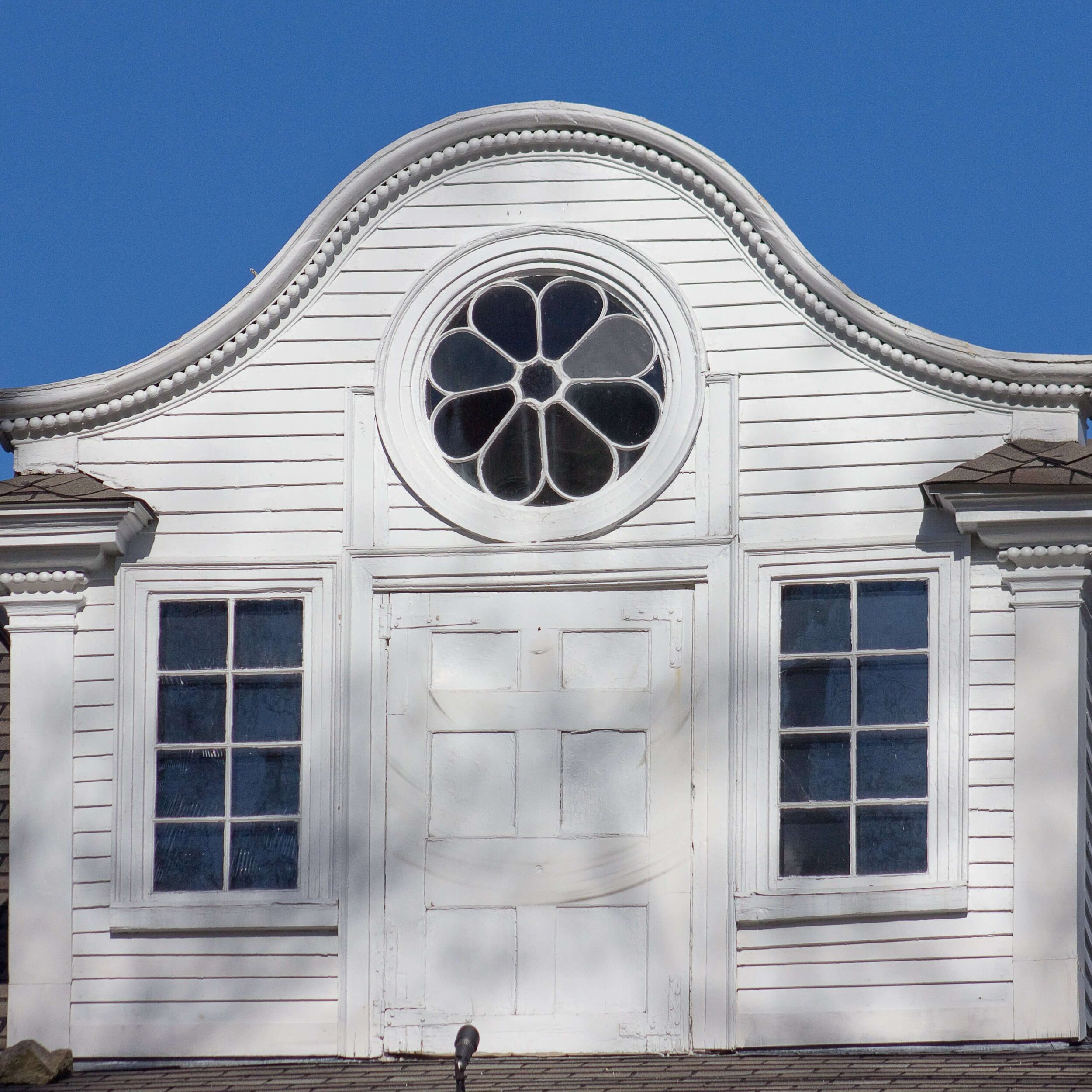Design ahead of its time
While simplicity is the keynote of the design, Hearthside is quite unique, with a sense of charm, dignity and stateliness. Smith used a great deal of imagination and care in the building of the house. He chose unusual materials and exceptional details of design. The walls are built of Smithfield stone, [fieldstone], a smooth, easily-cut stone with soft shades of gray, quarried from the area and trimmed with granite.
Hearthside is 2 1⁄2 stories high, and features a gable roof rising up to impressive ogee curves trimmed out with a beaded cornice, above circular attic windows. The windows are topped by granite lintels, and tall wooden pillars hold the full-height front portico, reminiscent of Mount Vernon. The portico is topped by a dormer which repeats the curve of the roof and beaded cornice. When it was originally built, the dormer had a balustrade around it, but that balustrade was lost when a tree came down upon it in the 1938 hurricane. A smaller, similar portico is located at the side entrance as well. The stone walls are constructed with an air chamber, filled with rubble, thus making it warmer in winter and cooler in the summer, and eliminating the dampness of a solid stone wall. The main entrance has a 6-paneled door, with double pilasters on each side, enclosed sidelights, and crowned by an elliptical fanlight. Upon entering the front door into the elegant foyer, visitors are greeted by a graceful “flying” staircase, with stairs set in a counter-clockwise direction around a Tuscan column. There are 10 rooms with a fireplace in each room, plus a third floor attic, and another attic space above that. Handsome blindfold shutters that fold into window reveals adorn each of the rooms.
Visit Us!
Step into history by seeing it firsthand and all it has to offer.
Special Features
Click or tap to enlarge photos
Rumford Oven
In 2002, a crack in the dining room wall led to the discovery of a Rumford oven, an important innovation in cooking technology that had been installed in the 1820s or ‘30s. The latest modern convenience at the time, this Rumford oven is extremely rare, perhaps only one of a few left intact in the country. The oven was one of Benjamin Thompson’s, or Count Rumford’s, most important inventions.
Hearthside’s oven arrangement is comprised of two small, individual stewpots and an oven in the wall next to the dining room fireplace. The heat of each fire could be regulated b varying the draught through its ash-pit door, and flues leading through the brickwork to the main chimney carried away smoke. The Rumford oven concentrated heat where it was needed, reduced fuel waste, and made cooking far less labor intensive. This invention, together with the baking oven, shaped modern methods of cooking and baking.
Attic Smoker Closet
Installed during the construction of the house, the smoker closet surrounding the chimney in the attic was used to preserve meats in the days before refrigeration. After first being cured with salt, meat would then be smoked in the closet for a period of two weeks or more. Smoke from a fireplace on the first floor travelled up the chimney to the closet where a brick removed from the chimney would allow smoke to fill the adjacent closet area. Another brick on the opposite side was removed to allow the smoke to escape and rise back up the chimney. The smoker closet at Hearthside is one of a very few remaining smokers of this kind in New England. More commonly, meats were smoked in separate smokehouses in the yard or in town.
Pipes of Pan
Hearthside’s families have enjoyed listening to the Pipes of Pan in the front parlor fireplace. When a fire burns in the hearth, a turn of the knob on the mantel causes the fireplace to make a flute-like sound. In 2009, the Friends of Hearthside received a grant to make necessary repairs to the chimney and to investigate what this mechanism was and how it worked. The findings showed a crevice with a metal paddle attached to a rod leading to the knob on the front of the fireplace. While testing was done with several fires in the fireplace, the sound could not be replicated, and so the mystery of how this worked still remains. The Pipes of Pan may well be unique to Hearthside.









